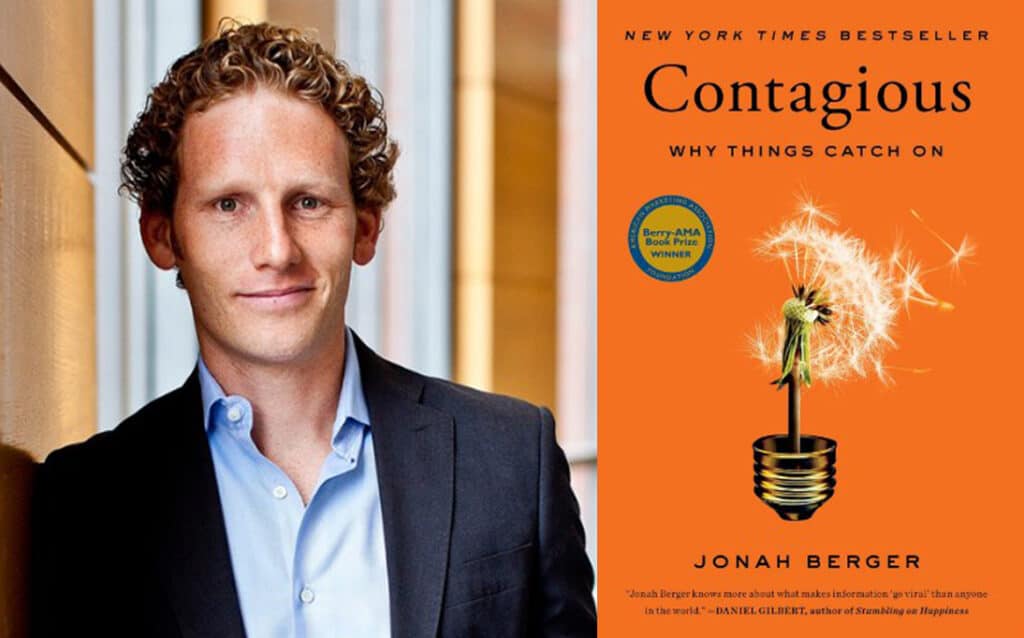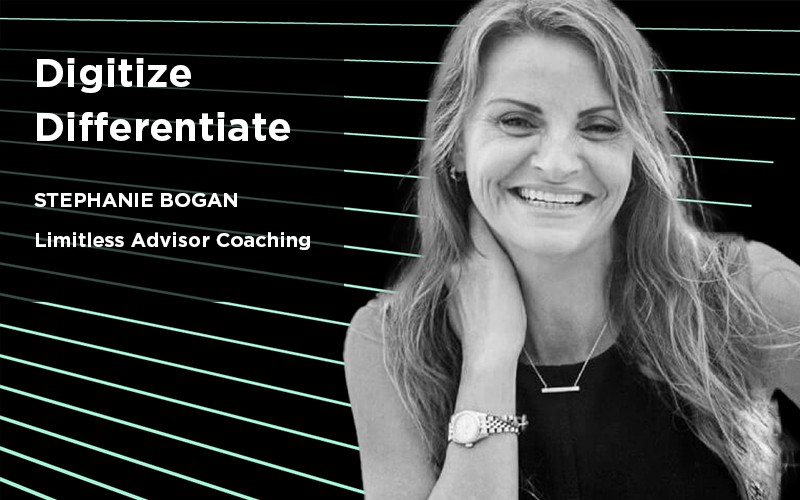Ever feel like your financial services business is buzzing along, only to realize your income is stuck in the same general vicinity as it was last year? You’re working hard, meeting with more clients and prospects than ever, yet you’re struggling to make the big leap forward you so desperately desire? Something’s gotta give, and that something is you. You need to do something different but what?
We discussed this topic at length on a recent episode of InsurMark’s The Breakthrough Advisor podcast, with our guest—international best-selling author and Wharton School professor Jonah Berger. The over-arching takeaway from our conversation was that advisors need to stop pushing numbers, ask more “Whys?” (the one word alluded to in the headline) and start giving clients more options. But what does that really mean?
Your approach to selling and service could be turning clients off After he published his first book in 2013—the bestseller Contagious: Why Things Catch On—Jonah was approached by a number of Fortune 500 companies (the Googles, Apples and Nikes of the world), as well as several startups. He realized that they all had the same challenge, in that they all had something they wanted to change in their organizations. But their approach to solving those challenges usually didn’t work.
According to Jonah, “Sales and marketing folks had customer clients they wanted to convince to come around. Employees wanted to change their bosses’ minds, and leaders wanted to transform organizations. Nonprofits wanted to change the world. Startups wanted to change industries. But I realized that many times the approaches they were using weren’t working. They were pushing, they were pressuring, they were cajoling, trying to get people to come around and, and it wasn’t happening.”
This common quandary got Jonah thinking, “Could there be a better way to change minds and drive action? Not by pushing, but by doing something else?” Jonah’s light bulb moment was the impetus for his latest book, The Catalyst: How to Change Anyone’s Mind.
Now think about it from an advisor’s perspective. YOUR perspective. Could doing something different be the catalyst that transforms your business from status quo to the juggernaut you’ve always dreamed it could be? After all, if what you’re doing now isn’t working, then doing something different certainly makes sense. Right?
Why pushing doesn’t work
Most advisors are busting at the seams with information they want to push on their clients,
when what the client needs is to be heard. Unfortunately, in most cases, the more you push information on clients, the more they dig in their heels. It’s human nature, and this pushing isn’t getting you or your business anywhere.
Based on his research, Jonah encourages his clients (many who are advisors) to do something different: Identify the barriers to change. “Often times people have all the information they need, and they’re still not interested. We need to do a better job of understanding the psychological drivers and barriers of prospects and clients and use that understanding to help them move in the right direction,” Jonah says.
It’s very similar to how a doctor would treat a patient. They can’t prescribe proper treatment until they figure out the root of the patient’s problem. You wouldn’t prescribe a Band-Aid for a broken leg, right? Advisors need to dig deep and determine what’s going on with the client and what barriers are standing in their way to moving forward before they can provide solutions.
When he was writing The Catalyst, Jonah spoke with experts in a wide range of fields—from top selling salespeople and transformational leaders to hostage negotiators, substance abuse counselors and parenting experts. Though their descriptions varied somewhat, all of the experts Jonah interviewed identified the same key barriers or underlying things that tend to impede change.
The five hurdles impeding change you need to know
This insight prompted Jonah to come up with the REDUCE framework. REDUCE is an organizational change management framework, which is “a process or structure that you can follow when implementing change within an organization.”
Jonah Berger’s REDUCE framework identifies five key barriers to change:
- Reactance (our natural reaction to push back)
- Endowment (an attachment to doing things a certain way)
- Distance (difficulty seeing tangible change because potential outcome is too distant)
- Uncertainty (not sure how things will all shake out once implemented)
- Corroborating Evidence (not enough proof that the solution works and why)
While all of these roadblocks won’t figure into every client situation, realizing they do exist and understanding how to overcome them could be that catalyst you need to take your business from stagnant to rocket powered.
When you stop pushing and start digging, both client and advisor win
During the podcast, we asked Jonah what advisors can do to apply these principles to their day- to-day operations. The insight he learned from hostage negotiators is one great example advisors can benefit from.
Jonah learned that seasoned hostage negotiators take a different approach than an inexperienced or hostile negotiator, who comes on the scene and just tells people what to do, “Put your hands up! Do X, Y, Z!” Like many advisors, they assume the mere act of telling someone what to do will get the person to take the action they request.
Just like seasoned hostage negotiators, advisors need to build a basis for understanding, connection and empathy to get people to listen. As Jonah explains, “Great hostage negotiators start with understanding. ‘Who is this person I’m trying to change?” and ‘What underlying reason got them here in the first place?’ They use that information to show the hostage taker the best way to get what they want is to actually do what the hostage negotiator said was a good idea in the first place.”
Jonah believes it’s also important for advisors to start with understanding. Instead of starting with, “Hey, this is the best solution for you,” he suggests, “Start by asking questions and figuring out. ‘Who is this person I’m talking to?’ What are the challenges they’re wrestling with? What are the reasons they might want to do what you’re suggesting?”
Asking “Why?” a few more times can help advisors better understand the client’s fundamental motivation, thus providing the insight they need to solve the client’s annoying problem. For example, if YOU think annuities are a great idea for the client, find out how THEY feel about annuities and why they feel that way. The more you understand about the client and the situation they’re in, the more effective you can be at encouraging them to do what you wanted them to do, while reaching a better outcome for the client (AND your business). In other words, embracing the fine art of understanding can be a win-win for you both.
Clients are more likely to listen and make a move when they have options
According to Jonah, the more we try to influence someone, the less it becomes clear to them that they’re in the driver’s seat. “People have this ingrained system where they detect persuasion attempts. The more they feel like someone’s trying to persuade them, the more they engage in defensive measures to avoid being persuaded. They avoid the message or ignore it. Or even worse, they counter argue. They think about all the reasons why what is being suggested is a terrible idea. So rather than pushing, we’ve really got to do something else,” Jonah says.
To overcome this “push back,” Jonah recommends advisors use a simple approach: Provide a menu. Instead of offering the one idea you think is best and firing off all the reasons that solution is a good choice—which will push them to counter argue and think of all the reasons NOT to make that choice—give them options.
Says Jonah, “Provide a menu and give them some choices. ‘Hey, I think you should consider X, Y and Z. Which one do you like better?’ By doing this, you subtly give them a very different job to do. Instead of thinking about what they don’t like, they’re thinking, ‘Which one of these do I like better?’ Because they’re focused on which one they like better, rather than counter arguing, they’re much more likely to pick one at the end of that interaction. I’m not suggesting giving people 50 options, which would be overwhelming, give them a limited set of options as somewhat of a guided choice. It’s not about telling people what to do, it’s about guiding them down a path.”
Do something different to ignite the catalyst that transforms your business
Did we cover all of the amazing tips that Jonah Berger had to share in this blog? Heck no! To learn more about using Jonah’s REDUCE Framework to help transform your business, listen to the entire podcast here. We also recommend grabbing a copy of Jonah Berger’s New York Times and Wall Street Journal best-selling book, The Catalyst: How to Change Anyone’s Mind, here.
And if you’re wondering how our advisor success programs can help you do something different and level up your advisor business acumen, contact us! You can connect with an InsurMark representative by phone at (800) 752-0207 or via our online form.



